Best IEMS (In Ear Monitor Systems) for Musicians
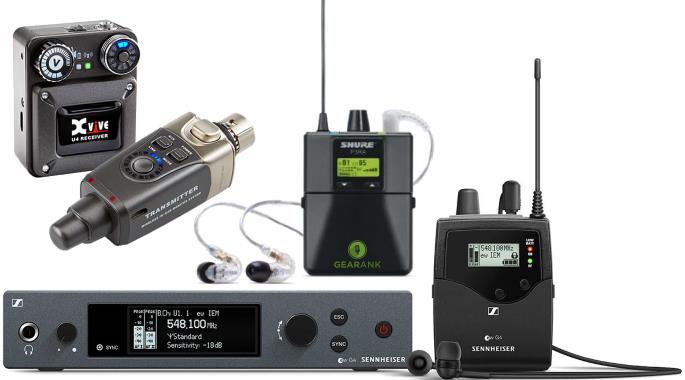
In Ear Monitors with Single Receivers
Shure PSM 300 (P3TRA215CL) Wireless In Ear Monitor
Cons
- Mostly plastic construction
- Included earpiece is a bit basic
- Short battery life around 2 hours of operation.
Pros
- Customizable mix via bodypack controls.
- Stable and reliable connection
- Impressive wireless range operation
- Hassle-free setup, even for those with no experience with wireless system setups
Shure has built an impeccable reputation around audio quality and reliability. And these exact principles are present in Shure ear monitors like the PSM 300.
This is a solid and reliable wireless IEM system. And it is loaded with features that guarantee a hassle-free setup.
It has a one-touch frequency scan and IR sync that can automatically find and assign a clean wireless channel.
Additionally, the bodypack boasts mixing control for real-time monitor mix and level adjustments.
As expected from Shure in-ear monitors, the sound quality surpasses expectations. It provides accurate audio representation through the basic earbuds that it comes with. The earbuds are nothing special, but get the job done and fit well.
The body pack is primarily plastic, which, at some point, is worrying. But being manufactured by Shure, you are assured of good build quality and reliable operation.
For many years since its release, it continues to be highly regarded for its stable and reliable operation.
Battery life could be better at around 2 hours, but this will be a non-issue if you always have backup batteries.
The setup is simple enough for those who want to dip their toes in the world of IEMs. Experienced professionals can attest to the sound quality it produces. If you're looking for a dependable IEM system with Shure's trusted reliability, the PSM 300 (P3TRA215CL) is an excellent choice.
It's easily one of the best in-ear monitors for under one grand.
Specifications
- Transmitter: P3T
- Receiver: P3RA
- Earphones: 2 x IE 4
- Frequency Range: 488MHz-512MHz
- Number of Frequencies: 15
- Transmitter Input: 2 x TRS
- Transmitter Output: 2 x TRS
- Receiver Output: 1 x 1/8"
- Receiver Power: 2 x AA Batteries
- Earphone Freq Response: 40Hz-20kHz
- Driver Type: Dynamic Driver
- Earphone Cable Length: 4.6'
| Website | Source | *Rating Value |
| Equipboard | davesolus | 80/100 |
Sennheiser EW IEM G4 Wireless In Ear Monitor
Cons
- Earbuds can be uncomfortable
- Battery life is a bit short
- Some features can be confusing for the inexperienced
Pros
- Robust metal body pack receiver construction
- Good range and resistance to interference
- System scan function allows for quick setups
- Great sound quality for church and professional stage settings.
Sennheiser is a well-respected brand in pro audio circles, renowned for well-built mics that sound amazing.
Their top-rated wireless in-ear monitor, the EW IEM G4, combines Sennheiser's premium quality with multi-channel operation and a wide range of frequency options.
With up to 1,680 frequency selections, 61 channels, and 42MHz bandwidth, the EW IEM G4 can operate reliably in different setups and venues. Its RF output power can also be adjusted from 10 to 30 to 50 mW, providing a transmission range of up to 330 feet.
Additionally, automatic frequency scanning and adaptive diversity simplify setup. At the same time, a lock function prevents accidental changes to settings.
This dependable in-ear monitor system performs remarkably well, even in large production settings. It has good, balanced sound, accurate frequency response, and excellent sound reproduction.
And given the metal construction of the bodypack, it feels sturdy and consistent with the high quality expected from a Sennheiser IEM.
Having dependable range and frequency options is essential for those who frequently perform in noisy and radio interference-prone locations, such as casinos with multiple stages and performance areas.
This is where this system shines; it can easily integrate into a venue that is already crowded by wireless systems. And years after it was released, the good reviews it is getting are still going strong.
Look no further than this wireless in-ear monitor system for those seeking superior sound quality and top-notch ratings. The Sennheiser EW IEM G4 is an excellent IEM for musicians and singers looking for a single-pack IEM system.
Specifications
- Transmitter: SR IEM G4
- Receiver: EK IEM G3
- Earphones: 2 x IE 4
- Frequency Range: Up to 42MHz
- Number of Frequencies: 1680
- Transmitter Input: 2 x XLR/1/4" Combo
- Transmitter Output: 2 x 1/4" (loop out), 1 x RJ-45 (ethernet)
- Receiver Output: 1 x 1/8"
- Receiver Power: 2 x AA Batteries
- Driver Type: Dynamic
- Earphone Cable Length: 55"
| Website | Source | *Rating Value |
| YouTube | Chris Mutch-Jones | 98/100 |
In Ear Monitors with Twin Pack Receivers
Xvive Audio U4R2 Wireless In Ear Monitor - The Best Budget IEM
Cons
- Line of sight required for clear signal
- Can experience WiFi interference
- Rechargeable battery is not user-serviceable
- Only has mono capabilities.
Pros
- Durable metal chassis receiver
- Uncomplicated setup process
- Sturdy yet small and light
- Rechargeable battery with extended 5 hour operation
- Great value for money
The Xvive Audio U4R2 is the twin pack version of the standard U4. It's using the same WiFi connection technology as the U4.
Speaking of WiFi, it operates on the 2.4 Ghz frequency, with a range of over 90 feet within line of sight. This makes it easy to configure but can also be prone to interference in areas where too many WiFi frequencies are being broadcast.
One design move worth pointing out is that, the volume knob of the transmitter is placed at the front of the receiver instead of on top. It's not as awkward to dial it as you can just use your thumb to dial it up or down.
It comes with a rechargeable battery with up to 5 hours of operation on a full charge, which is more than twice what others offer. While battery life is excellent, non-serviceable batteries can be a dealbreaker for some. This could easily be mitigated by using a battery pack of some sort. It has a micro USB hub and it can charge up the pack while in use.
Please note that the wireless in ear monitors for musicians or presenters must be purchased separately for this unit. So, you'll have to consider this additional expense when budgeting. But this limitation can also be suitable for those who want to use their preferred earbuds. Note that the earbuds you will get will affect sound quality and comfort.
Another one you need to be aware of is the U4R2 is only capable of outputting mono signal. Compared to wedges however, a personal IEM would still provide you customized monitoring.
The overall value and quality of the U4R2 is still quite good for the price. It's more than capable of competing with established brands like Shure. This value for money is the main strength of this affordable IEM.
There was a time when budget in ear monitors are non-existent. But thanks to brands like Xvive, we now have affordable quality options like the U4R2.
The U4R2 remains the best wireless in ear monitor system for small venues and ensembles who want the benefit of wireless and isolated monitoring systems. It currently beats out other budget IEMs.
Specifications
- Transmitter: U4T
- Receiver: 2 x U4R
- Earphones: None
- Frequency Range: 2.4 GHz
- Transmitter Input: 1 x XLR
- Receiver Output: 1 x 1/8"
- Frequency Response: 20 Hz – 20 kHz (-3dB)
- Driver Type: N/A
- Receiver Power: Rechargeable Lithium-ion
| Website | Source | *Rating Value |
| Guitar Interactive | Jonathan Graham | 95/100 |
| YouTube | Aaron Short Music | 96/100 |
Sennheiser EW IEM G4-TWIN Wireless In Ear Monitor
Cons
- Short 2-hour battery life
- Some features are not intuitive
- Earbuds can initially feel uncomfortable
Pros
- Good range and signal stability
- Easy setup with System Scan function
- With personal mix controls
- Can operate reliably in venues prone to interference
The Sennheiser EW IEM G4-Twin is the twin-pack version of the highly rated EW IEM G4. It shares the same solid build quality and quick setup as the single version, only this one has two receivers bundled.
It sports a clean sound signature that's expected from a Sennheiser product. This is what sets it apart from the many wireless IEMs available today. It sounds good enough for professional monitoring use.
Because of its twin pack package, the EW IEM G4-Twin can better use the transmitter's wide frequency selection (1,680) and ability to operate in various channels.
Other useful features include automatic frequency scan and adaptive diversity. This can simplify the process of setting up the two receivers. It also helps prevent ambient noise and electrical signal interference.
Although this IEM still utilizes dynamic drivers, it's important to note that you're still getting a good deal due to Sennheiser's reputation for producing high-quality sound. This is especially true compared to more expensive models using dynamic drivers.
The low frequencies are articulated distinctly without compromising the clarity of the high-end sound. The technical performance of the transmitter is also good, making it a reliable IEM system for regular use.
The Sennheiser EW IEM G4-Twin is a good value package if you prefer two receiver In-Ear Monitoring systems. And it can be an easy addition to venues with a busy wireless system setup.
Specifications
- Transmitter: SR IEM G4
- Receiver: 2 x EK IEM G3
- Earphones: 2 x IE 4
- Frequency Range: Up to 42MHz
- Number of Frequencies: 1680
- Transmitter Input: 2 x XLR/1/4" Combo
- Transmitter Output: 2 x 1/4" (loop out), 1 x RJ-45 (ethernet)
- Receiver Output: 1 x 1/8"
- Receiver Power: 2 x AA Batteries
- Driver Type: Dynamic
- Earphone Cable Length: 55"
| Website | Source | *Rating Value |
| YouTube | Florin G | 93/100 |
In Ear Monitors with Four Pack Receivers
Xvive Audio U4R4 Wireless In Ear Monitor
Cons
- Built-in battery is not user serviceable
Pros
- Small and light
- Built-in rechargeable batteries
- Good battery life - will last for an entire gig without recharging
The Xvive Audio U4R4 is the four pack version of the Xvive U4. It provides the same WiFi-based connection that others offer but at a fraction of the cost.
Similar to the single unit U4, the operation frequency is 2.4 Ghz and a range of 90 feet within line of sight.
When paired with good-fitting earbuds, the sound quality of the U4R4 is quite good. It has excellent sound stage and sound reproduction, and you'll hear the high frequencies well. It's still not the same quality as more expensive models by Shure and Sennheiser, but it's not too far off either.
The U4R4 has rechargeable batteries with up to 5 hours of operation time. Should you run out, you can charge both the transmitter and the receiver while in operation. A small power bank can help supplement that.
In addition, the bodypacks are compact and lightweight, making them easy to wear without interfering with most clothing.
It's worth noting that the built-in battery of this product cannot be replaced or serviced. This may not be ideal for individuals who prefer longer-term gear investments.
Another issue is the need to buy earbuds separately. Some retailers bundle this IEM with affordable options from brands like Sennheiser, Audio-Technica, or Shure to solve this.
The Xvive Audio U4R4 wireless in-ear monitor system tops this guide in terms of value. It offers good functionality and performance for the price. And it's not in the same price point as more expensive units.
This is the best wireless IEM system for those needing multiple receivers and working with budget constraints.
Specifications
- Transmitter: U4T
- Receiver: U4R
- Earphones: None
- Frequency Range: 2.4 GHz
- Number of Frequencies: NA
- Transmitter Input: 1 x XLR
- Transmitter Output: None
- Receiver Output: 1 x 1/8"
- Receiver Power: Rechargeable Lithium-ion
- Earphone Freq Response: NA
- Driver Type: N/A
- Earphone Cable Length: NA
| Website | Source | *Rating Value |
| Guitar Interactive | Jonathan Graham | 95/100 |
Things to Consider When Buying Wireless In Ear Monitors
-
Before answering this question, we must return to the IEMs vs. Stage Monitors debate. There is no clear winner between the two because they have distinct pros and cons. But the trend is siding on IEMs; more musicians and productions have switched over. You can read more about What Are In Ear Monitors for more information.
IEMs (In Ear Monitors) provide excellent sound isolation. This allows each musician on stage to have their personalized mix that will be fine with others. This can drastically reduce stage volume, which allows musicians to hear themselves better. Portability is another advantage of IEMs. You no longer have to move heavy floor wedge cabinets around the stage.
When opting for the best IEMs, you should also assess their compatibility with your PA system, making sure everything integrates smoothly. We've dedicated an entire article "What is a PA System" to assist you in the process.
The primary drawback of IEMs is their cost, as they can be relatively expensive. Specific models like the Empire Ear Odin are priced over $3,000. Thankfully, there are now more affordable options for entry-level use. But even the cheap ones can still be beyond the budget of some bands and productions.
Another significant drawback is the listening experience. IEMs do not generate the same air movement as amps or stage monitors. But they make up with this by providing excellent noise isolation.
IEMs are also prone to hardware, battery, technical, and connection problems. But the same can be said with Stage Monitors.
On the other hand, Stage Monitors provide a more natural listening experience. When set up correctly, they allow musicians to hear the natural acoustics of their instruments, gear, and venue. There's also more interaction between band members since they can listen to each others' monitors. Stage monitors are also generally cheaper and more durable. Their simple setup makes them the practical choice for those with budget limitations.
One major disadvantage of stage monitors is their size and bulk, which makes them impractical for events or situations where portability is a top priority. They are also more prone to feedback and can be challenging to control in noisy, large venues. They also add to stage volume, which, if not controlled, can lead to ear problems and the use of Ear Plugs.
Since you're here looking for IEMs, you've probably dealt with the problems of traditional amps and speakers, as mentioned above. If you want to address these issues, IEMs are worth investing in. To cater to those who can only shell out a little, we've included the best budget IEMs in this guide.
-
As of July 13, 2020, FCC regulations have been implemented. This means some older wireless systems can no longer be legally used in the United States. The frequencies that you can no longer use are 617-652 MHz and 663-698 MHz. All in ear monitors we have recommended operate outside those frequencies and comply with the regulations. For more information on the compliance of wireless systems, read this FCC consumer guide. The regulations for wireless microphones also apply to wireless in ear monitors.
-
This specification details the range of frequencies the wireless system can operate. With careful planning, you can use this information to maximize the number of IEM systems you can simultaneously use on stage. By buying those working together, you can have the entire band using in-ear monitors.
Since these systems operate using unlicensed frequency bands, they can be prone to interference, so the more the range of operation, the easier it is to switch to clean frequencies as you move from venue to venue. Note that some in-ear monitors have alternate versions using different frequency bands. While most wireless in-ear systems have built-in automatic scan and sync features, there may be times when you'll have to take control and set frequencies yourself. This is particularly true where multiple stages or venues are close to each other, as often found in venues like casinos.
-
This specification indicates the frequencies that the system and earpiece can reproduce. The lower the frequency response starting range, the more bass response it can produce, while the top range dictates the high end (treble) it can handle. Most musicians will prefer a pair of earpieces with a balanced sound reproduction. Flat frequency response is what's considered as great sounding when it comes to monitoring. It lets you hear your sound accurately and prevents unwanted coloration.
The most common IEMS focus on the mids, but there are IEMs that emphasize low-frequency sounds, and these are well-suited for performers like bassists, drummers, and DJs. Using in-ear monitors with extended low-frequency response, rich bass, and powerful sound. Some have replaced the earpiece and earbuds altogether to hear the lows better. Most affordable universal IEMs utilize dynamic drivers which are good at providing low end, while others focus on mid to high-end clarity with balanced armature drivers. Hybrid IEMs combine the two for a more balanced response. For those with high budgets, they have the option to go for planar iems, which provide better bass response.
While IEMs can reproduce all the frequencies that are needed for monitoring, the small dynamic drivers tend to limit the bass. The bass frequency response of even a flagship IEM may not be as extensive as that of studio headphones. This is why bass heads like DJs are often seen using studio headphones even while performing on stage. Remember this when choosing between Headphones vs Earphones.
What you consider great sound will depend on what you need to hear through the in ear monitors. Sound quality can suffer when the in-ear monitors are driven too hard or specific frequencies are pushed too much. So always remember to keep the volume and EQ at manageable levels.
-
In ear monitors with multi-channel mixing allow performers to personalize their monitoring experience. You can make real-time adjustments while giving the sound engineer control for applying effects and Audio Ducking when needed. When properly adjusted, you can hear your playing more effectively. And this can dramatically improve your playing and performance. In ear monitors with this feature are great for big-stage productions, and is in-demand in the IEM market.
-
Earbuds play a critical role. They must fit correctly to play the sound directly to your ear canal. Ear tips also have to block out ambient sound and, at the same time, hold the earpiece assembly in place.
The included earphones and earbuds with IEMs are usually generic. They may or may not be a perfect fit for your ear. Thankfully, some offer different-size buds if the default one doesn't fit well. To get the most out of your IEM system, you can use "custom molded" earbuds that fit your ear perfectly. The caveat to custom in ear monitors is that these personalized earbuds can be expensive. For example, the 64 Audio U12t with a balanced armature driver is priced at just under $2000.
To make sure you are doing the right thing to protect your hearing, head over to check out our list on the best earplugs for musicians.
-
Most IEM receivers are powered by two AA batteries. These widely available batteries are the easiest to replace, so you won't have to worry about battery life. Still, replacing these batteries can add up when the receiver is used regularly. Some manufacturers have opted for built-in rechargeable batteries, which can be cost-effective in the long run. One crucial thing to consider when opting for units with built-in batteries is that some will not be readily replaceable. Some units require you to send them to the manufacturer or service center for replacement. Doing it yourself will most likely void any warranty the unit has.
Are In-Ear Monitors Worth The Money?
The Importance of FCC 2020 Compliance
Wireless Frequency Range
Frequency Response
Multi-Channel Mixing
Earbuds
Receiver Battery
Best In Ear Monitor System Selection Methodology
The first edition was published in 2016. The current edition was published on Feb 15, 2024.
We started by looking at the best-rated FCC-compliant in-ear monitors that can be readily brought through major US retailers. For this edition, we gathered and analyzed over 6,600 rating sources, including the most recent reviews, ratings, and expert recommendations. All these data were then fed to the Gearank Algorithm, giving us the rating scores out of 100 you see above. These scores reflect relative market sentiment about each system. We used the scores to select the best in three categories: Single Receiver, Twin Pack, and Four Pack. For more information about our methods, please read How Gearank Works.
About the Author and Contributors
Here are the key people and sources involved in this guide's production - click on linked names for information about their music industry backgrounds.
Lead Author & Researcher
Raphael Pulgar
I've been an audio engineer for 20 years specializing in rock and metal recordings. I also play guitar and produce original music for my band and other content creators.
Wireless in-ear monitors are one of the best things to come out on the market for performers, but they can get complicated to set up. Luckily, modern wireless in-ears have better transmitters and receivers. Nowadays, certain products do not require rack mounting anymore. For touring musicians, it can be one of the best investments you can make and will help your consistency on stage.
Contributors
Allen Articulo: Research and Supplemental Writing.
Alexander Briones: Update and Editing.
Jason Horton: Editing and Illustrating.
Media
Main/Top Image: By Gearank.com using photographs of the Xvive U4. Shure PSM 300 and Sennheiser EW IEM G4.
The individual product images were sourced from websites, promotional materials or supporting documentation provided by their respective manufacturers.



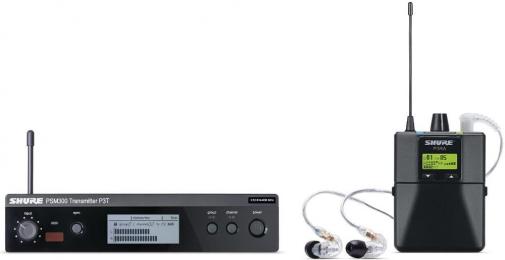
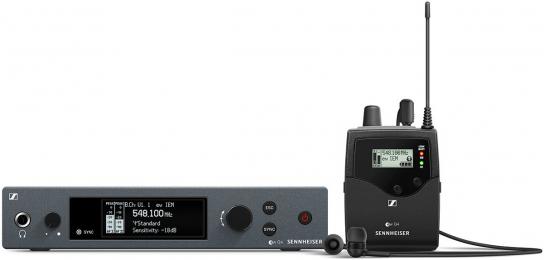
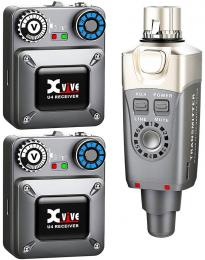
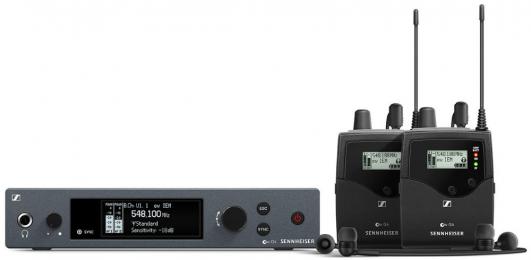
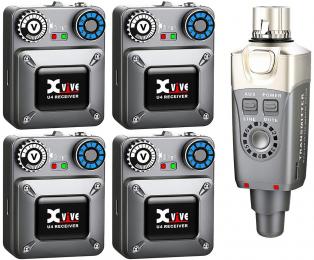
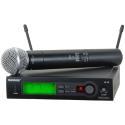

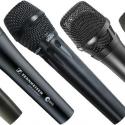
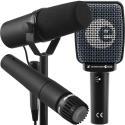
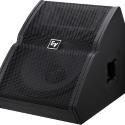
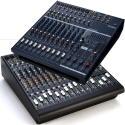
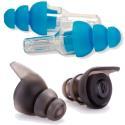
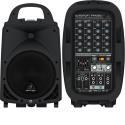
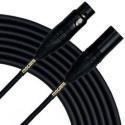
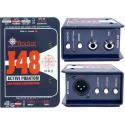
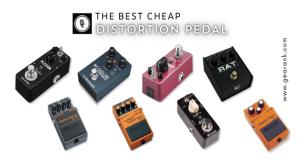

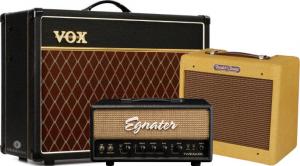
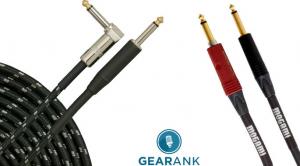
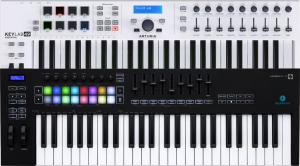
Comments
The following wireless
Submitted by Jason Horton on
The following wireless systems came off the recommended list when we published our December 2022 Edition:
Thanks for the review
Submitted by Cooper (not verified) on
Thanks for the review everyone - super helpful. Few questions.
It looks like you removed the lower end Galaxy 4-pack system in 2021 but curious what you think of their higher end models?
What are some of the key differentiators between the AS-950-4 band pack and the comparably priced Xvive 4-pack? Thinking stereo optionality with Galaxy line is nice, and although the provided earphones are probably garbage, the package would be helpful for setting up a band with limited funds.
With the Xvive operating at 2.4GHz, does that mean it is not subject to RFI? Or less likely? Not super familiar with the frequency ranges and potential interference issues..
We didn't originally publish
Submitted by Jason Horton on
We didn't originally publish our rating for the AS-950-4 because its preliminary rating fell below our threshold for being added to the shortlist - I've published it now and you can see its rating in this list of 4 pack systems.
I'll let Raphael respond to the other parts of your post.
Hello Cooper,
Submitted by Raphael Pulgar on
Hello Cooper,
Regarding the AS-950-4 vs the Xvive 4-pack, The Galaxy Audio pack has a rackmount receiver while the Xvive has a more compact form factor for both the transmitters and the receivers. This is the main factor people gravitate towards the Xvive and their sentiments are reflected on its higher Gearank Rating.
As for your RFI question, the short answer is yes because devices operating with that chipset do not use FM Modulation like UHF units.
If anything, at this range, Wi-Fi interference is more likely. Fortunately, many wireless audio products operating at this range (mainly the best ones) have been calibrated not to conflict with Wi-Fi routers.
Hope that answers your questions!
-Raphael
Publication of our February
Submitted by Jason Horton on
Publication of our February 2022 Edition resulted in the following system coming off the recommended list above: Shure PSM 900 (P9TRA425CL).
For our March 2020 edition we
Submitted by Jason Horton on
For our March 2020 edition we removed the following 4-Pack systems, however you can still see our analysis of them:
Today we removed the Audio
Submitted by Jason Horton on
Today we removed the Audio-Technica M2 and Audio-Technica M3 due to the FCC compliant versions being discontinued.
The following system has been
Submitted by Jason Horton on
The following system has been removed from the recommended list above due to a lack of availability: Sennheiser EW 300 G3.
I know this is different but:
Submitted by Larry (not verified) on
I know this is different but: Have you looked at any of the systems that work with an iPhone that let you mix your own blend? Examples would be PreSonus Q Mix or the X32 rack by Midas? This is still relatively new tech but wondering if it is worth the look? The idea is that each person is responsible for their own mix and can dial in as much or as little of what they want to hear.
What do you think of LD
Submitted by Gina (not verified) on
What do you think of LD Systems MEI, LD MEI 1000 wireless or, Shure PSM 200 SE 112. We use wireless mics and wedges. Over the last year I started getting ringing in my ears so I'm looking for something that will protect my ears better playing out and that doesn't have any static noise and will give me the sound so I can sound better myself. I can't spend more than $400. Thanks
There aren't a lot of good
Submitted by Jason Horton on
There aren't a lot of good systems in the sub $400 price range, but I'll try to help.
Probably your best option would be the Carvin Audio EM900 which is currently on special for $379 - read our EM900 meta review here.
The LD Systems MEI 1000 hasn't been rated by us so I can't help you with that one, but we did rate the Shure PSM 200 but it's no longer widely available in the USA however here is its rating.
Thank you so much for your
Submitted by Gina (not verified) on
Thank you so much for your advice. I realize $400 isn't much for quality. I may go up to $700. Will the Carvin Audio and the Shure both be for the new rules of 2020?
The current Carvin Audio
Submitted by Jason Horton on
The current Carvin Audio EM900 and all current Shure systems are compliant with the new FCC rules, however I can't guarantee that a second hand Shure PSM 200 system will be.
Make sure any system you buy does not use the frequency bands 617-652 MHz and 663-698 MHz if you want to be able to use them when the new rules come into effect.
I am a non believer in the
Submitted by Kevin Smith (not verified) on
I am a non believer in the need for an in ear monitoring system with bands on the local level. First, I am old school. 61 years old, and have always performed with traditional wedges. I tried ear buds when they firs came out. Ours were ("hardwired"), and came with zero fidelity, and loads of discomfort. Up to , and including a dreadful inner ear infection for all members. Now, after decades of honing my craft, I am playing in a very high profile local act that requires me using the buds again. I have been loaned a set of SURE 846 ear pieces , and a PSM 900 until such time as I can afford my own.
My problem is , while the overall fidelity of the buds have improved over the years , I still find them sorrowfully lacking.
I can't seem to dial in my stage mix when playing live. I am well past the introductory period to become acclimated with the buds as they fit and feel, so suggesting the issue is with our set up introduces another annoying problem as we are using the recommended high end, high cost products.Our history would indicate there is no possible solution as two players have re-invested in their ear buds to the tune of some $6000 each ! The molded custom plugs were bought, used twice, and discarded to the dead gear box and accounts for yet another $1550.
Understand we have won every award for music in our city for the last 5 years. The crowds are enormous. We hire full sound and lights with the same guys running it for every show. In other words, this old man has got a real cushy gig that pays very well, is high profile, and where I don't have to touch a single piece of gear coming or going !
I have to make this ear bud thing work. If anyone has a sure fix ritual we can perform , PLEASE mail me back with a link.
I'm curious, where do you
Submitted by Gina (not verified) on
I'm curious, where do you play?
One system was removed from
Submitted by Jason Horton on
One system was removed from our recommended list as a result of today's update, but you can still read our meta review for the Carvin Audio EM900 Wireless In-Ear Monitor System.
I've been a Shure PSM600 user
Submitted by Peter M. (not verified) on
I've been a Shure PSM600 user for over 15 years, and now I'm forced to move on thanks to FCC regulations. All companies reviewed here, with the exception of Carvin, are offering trade-in rebates for systems operating in the 600mhz range, FYI.
Thanks for the tip - we
Submitted by Jason Horton on
Thanks for the tip - we already have an update planned around this.
For anyone that doesn't know - from July 13, 2020 the FCC will not let you operate wireless systems in most of the 600 MHz band.
More information can be found at fcc.gov/consumers/guides/operation-wireless-microphones.
I am looking for a wireless
Submitted by Maryann (not verified) on
I am looking for a wireless microphone system that includes in ear too.
What I need to buy?
I have also been looking for
Submitted by Jason Horton on
I have also been looking for a single wireless unit that combines both in-ear monitors and a headset mic. Unfortunately I haven't found any yet, or ones with a handheld mic, so at the current time it looks like you have to get them separately which means wearing two bodypacks - not ideal.
I'll post back here if I find a better solution.
Have you heard any pros or
Submitted by Bob (not verified) on
Have you heard any pros or cons on the Galaxy Audio TX and RX system? The price is certainly attractive and the specs are good. Thanks for any input.
Galaxy Audio is often
Submitted by Chris (not verified) on
Galaxy Audio is often overlooked but an great company with quality audio and customer service second to none. I love that they field their service calls at their home base in central Kansas USA! Shoot just call them if you have any IEM questions they are helpful and not at all pushy.
I'm curious about this, you
Submitted by Scott (not verified) on
I'm curious about this, you give Galaxy a very positive review here but don't put them in your list, why's that? You really didn't answer the original question. Thanks.
Hi Scott,
Submitted by Jason Horton on
Hi Scott,
You seem to be addressing "Chris (not verified)" as though he works here at Gearank.com - he doesn't work here but I do.
Just for the record, to date we have not published reviews of any Galaxy Audio wireless IEM systems on this site.
To answer the original question, I'm not aware of Galaxy Audio having any wireless IEM's with the designation "TX" or "RX". To the best of my knowledge their wireless IEMs come with the designation "AS".
Only one of their wireless IEMs had high enough ratings to make it onto our short-list for this guide and it didn't rate highly enough for us to recommend it - it was the AS-1100.
Why is the MIPRO stuff not on
Submitted by Damien (not verified) on
Why is the MIPRO stuff not on this list?
my thoughts exactly. the only
Submitted by Ropodope (not verified) on
my thoughts exactly. the only 100% pure digital IEM system on the market and fantastic in its' design and delivery. everything about it reaks of quality and not only does it outperform the Sennheiser g3 or new g4 IEM (which are great in their own right) it can be had at almost 1/2 the cost. there is NOTHING out there like it. Here's a fantastically detailed review by a real musician. he is right on every point. http://northmar.com/mipro-mi-909-review-best-in-ear-wireless-for-musicians/
We examined the top seller
Submitted by Jason Horton on
We examined the Wireless IEM lists of all the major music gear retailers in the USA and the Mipro brand wasn't on any of those lists. Mipro did win a TEC award a couple of years ago for one of their wireless IEM systems but they didn't qualify for this guide because they're not widely available.
I use the Mipro 909 system
Submitted by Darron (not verified) on
I use the Mipro 909 system personally, and have the Sennheiser systems at work. I prefer the Mipro, hands down. I agree, not as commonly available, but with the internet, that’s not a problem these days. It’s not hard to find a vender willing to sell you one if you look.
Did you see anything about UE
Submitted by Sexton (not verified) on
Did you see anything about UE Pro?
I don't recall seeing
Submitted by Jason Horton on
I don't recall seeing anything specific about Ultimate Ears Pro, and I'm not sure what Alexander Briones saw during our research, but I can tell you they didn't make it onto our short-list.
Edifying and helpful article
Submitted by Michael P. Naughton (not verified) on
Edifying and helpful article Alexander Briones and Gearank, thanks. I am sold on IEMS as a vocalist after experiencing horrible sound and technical difficulties at well-known venues. Floor monitors are a thing of the past and a crapshoot for most singers. I have also spoken with other pros and this is the way to go.
I got my eye/ears on Sennheiser EW 300 based on your article.
Glad to be of help, hope you
Submitted by Alexander Briones on
Glad to be of help, hope you get the most out of the Sennheiser EW 300.